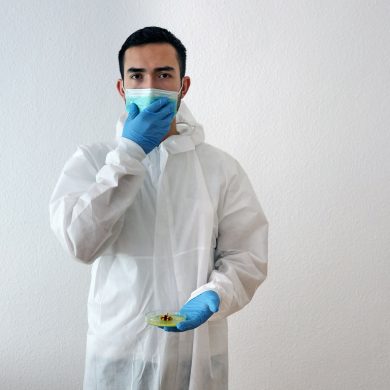Imagine waking up on a warm San Diego morning to the harsh squawks of tropical parrots rather than the gentle cheeps of bluebirds and finches. From gray whales found in the Atlantic to tropical microbes in Texas, a global reshuffling of ecosystems is occuring on Earth as climate change drives species across oceans and continents.
The most apparent movement of wildlife has taken place between the Atlantic and Pacific oceans via the Arctic. As Arctic ice melts, new passageways are being found connecting the Atlantic and Pacific Oceans and allowing species to move between them. For example, gray whales were thought to be extinct in the Atlantic since the 18th century. But this changed in 2010, when a gray whale was spotted off the coast of Israel [1]. Since this first sighting, more whales have been found near the Atlantic sparking worldwide curiosity and research. Using radiocarbon dating of gray whale bone fossils, researchers found that, much to their surprise, Atlantic and Pacific whales were not genetically separated by millions of years as previously accepted– over the past 100,000 years, a series of migrations occurred as Pacific whales found passageways to the Atlantic [4]. The timing of these migrations directly correlate to periods when the oceans were warming and the Arctic was melting. Both the melting of ice and the movement of species had a profound effect on the Pacific and Atlantic ecosystems. Birds previously avoided the Arctic because ice prevented them from diving for prey, but melting ice allowed them to still find food while traveling through the Arctic. Just like the effect of rising temperatures is drastically changing the Arctic, as temperatures change on a global scale the world’s ecosystems are being thrown into a muddle.
While migrations of mammals as large as the gray whale are the easiest to notice, microbial and pestilence movement is equally important and can pose a real threat to existing populations. As temperatures rise, microbes have been migrating to find new environments that better suit their needs. Diseases, such as malaria, have been spreading to higher elevations where the temperatures are no longer too cold. Tropical diseases, such as Leishmaniasis, are moving north, and cases have even been found in Texas [2]. This threatens human and animal populations alike. Further, agriculture in traditionally colder regions has been ravaged by pests that have spread to now warmer regions. Johnson grass is an invasive Mediterranean species that damages legumes, corn, sorghum, and soybean, and it has been ravaging crops as it spreads throughout the U.S. [2]. Coffee crops now face endangerment as pests have become increasingly prominent in coffee plantations in light of climate change. While these species seem too tiny to be seen as a real danger, they have the most direct effects on human populations.
Many microbes have also failed to adapt to the changing climate and could therefore face extinction. While this may seem like a relief to most, the complete elimination of certain microbes could have drastic consequences for ecosystems across the globe. In an experiment conducted in the Harvard Forest, it was found that even short term periods of warming reduced plant growth, functional diversity and increased the risk of extinction of species [5]. When testing the effects of immigration of new microbes into the warmed soil, it was evident that introducing new species would not make up for the lost ones [5]. Thus, the negative effects of climate change usually outweigh any possible benefits from the immigration of new microbes. This is true for many species who cannot adapt in pace with climate change. In fact, The Living Planet Report has found that by 2020, two-thirds of mammals, birds, fish, and reptiles that existed in 1970 will be wiped out.
As species move to avoid the effects of climate change, ecosystems change drastically. Research has shown that nearly half of all species are moving, and this drastic shift is already affecting humans. As these migrations progress, humans must work to reduce our impact on the environment as well as adapt to the changes we have largely contributed to. Over time, if these practices are not changed, we may live in a world in which species are not just displaced, but lost entirely.
Sources:
- https://www.washingtonpost.com/news/energy-environment/wp/2015/11/30/animals-are-showing-up-in-really-strange-places-this-is-the-surprising-reason-why/?noredirect=on&utm_term=.d272a69e725d
- https://news.nationalgeographic.com/2017/04/climate-change-species-migration-disease/
- https://www.independent.co.uk/news/science/climate-change-extinction-species-happening-too-fast-for-plant-and-animals-to-adapt-a7433111.html
- https://www.wnyc.org/story/extinct-gray-whale-population-may-reappear-atlantic/
- https://blogs.scientificamerican.com/guest-blog/how-climate-change-endangers-microbes-and-why-that-s-not-a-good-thing/

